Planning A Trip To Japan Like A Travel Master
You have decided you want to visit Japan soon – great! But now comes the hard part: planning. There are just too many things to put in mind: time, places, what to eat, then booking flights, hotels, transportation… Argh, overwhelming! I totally understand. So I have decided to make a looooong guide into planning a trip to Japan from A to Z (all you need in a single article). Very simple! You and I will go through 3 stages: designing your itinerary, preparing before your departure and some advice during your trip to Japan. After this, you will be confident travel guru who finds planning phrase a piece of cake!
I. First Things First, Design Your Itinerary
1. When will you travel to Japan?
Japan has four distinct seasons: You’ve got the famed cherry blossoms in the spring, festivals in the summer, vibrant foliage in autumn, and powdery snow come wintertime. So this begs the question: When is the best time to visit Japan? Let’s decide (according to your personal taste) after read these following information about each season:
Spring in Japan (March – May)
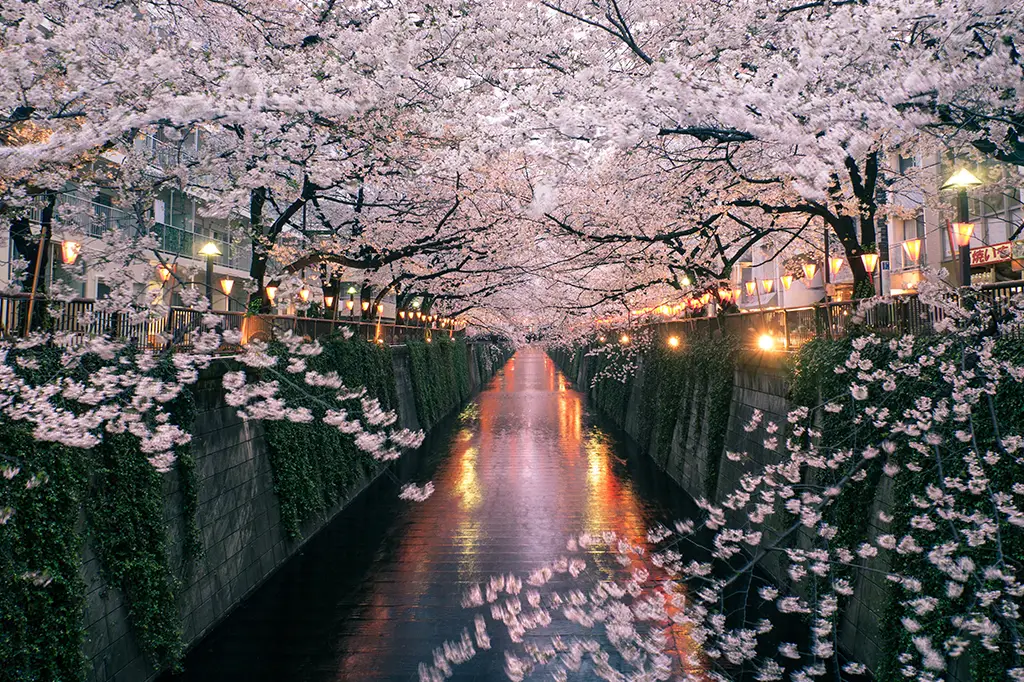
Spring is blessed with nice weather and fabulous cherry blossoms.
SEE MORE:
- Typical Weather: Nice during the day, but chilly at night. Mostly sunny with more showers near the end of May.
- Average winter temperatures: 40°F (4°C) – 70°F (21°C) in Tokyo
- Pros of visiting Japan in the Spring:
- Comfortable temperatures
- Famous beautiful Sakura (cherry blossoms). Which Is The Best Place To See Cherry Blossoms In Japan? Know Here
- Cons:
- Crowded (make reservations far in advance!). You may want to avoid “Golden Week. This period consists of four national holidays, from April 29th – May 5th every year. Many locals take time off to travel around the country, so it is insanely congested, expect transport and accommodation to be fully booked.
- Prices tend to be higher since it is peak season.
Summer in Japan (June – August)

Rainy summer has a peaceful and romantic side.
- Typical Weather: Hot, humid, sticky, and rainy. But not as bad as everyone makes it out to be.
- Average winter temperatures: 70°F (21°C) – 90°F (32°C) in Tokyo
- Pros:
- Cultural festivals throughout the country including Kyoto’s Gion Matsuri and Osaka’s Tenjin Matsuri
- Prime season for outdoor activities like hiking through the Japanese Alps or venture up to Hokkaido
- Great time to go to the beaches and try scuba diving in Japan
- Cons:
- Can get very humid
- Monsoon rains can be heavy and make their appearance suddenly during June and July. Good news, you can avoid unnecessary crowds and enjoy traveling during Rainy Season In Japan – A Romantic Journey.
- Typhoon season peaks in August. These tropical storms can disrupt travel plans. Don’t worry, here are some practical travel insights for Typhoon Season In Japan: Facts And Safety Tips.
Autumn in Japan (September – November)
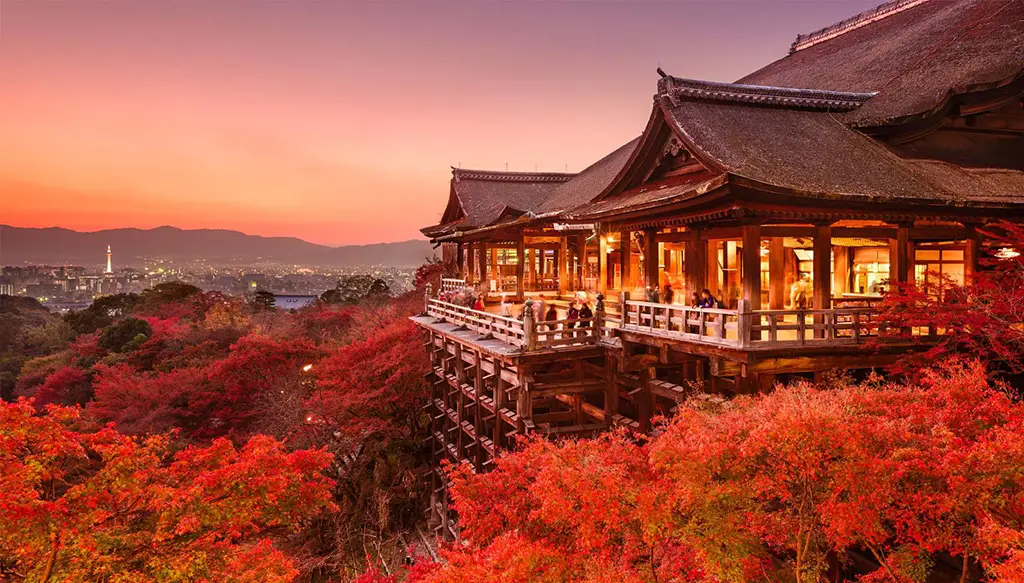
Vibrant foliage in autumn
- Typical Weather: not much rainfall and beautifully clear, crisp skies.
- Average winter temperatures: 50°F (10°C) – 80°F (27°C) in Tokyo
- Pros:
- Mild temperatures
- Changing colors of foliage in all their glory. You should consider a train ride to make the most of this spectacular view. Some recommended trips include Kyoto to Arashima, Tokyo to Nikko, and the Kurobe Gorge Railway.
- Summer clearance and autumn sales. This is a dream time for shopaholics to find a bargain and check out the Japanese retail scene – cultural experience in itself.
- If you’re a foodie and haven’t yet decided when to go to Japan, book your trip for this season. In September, Kyoto welcomes the Plum Wine Fair and there are craft beer events all over central Japan. Late October is the time for the Tokyo Ramen Show.
- Cons:
- September can be a pretty humid month, but it starts to get better in October.
Winter in Japan (December – February)
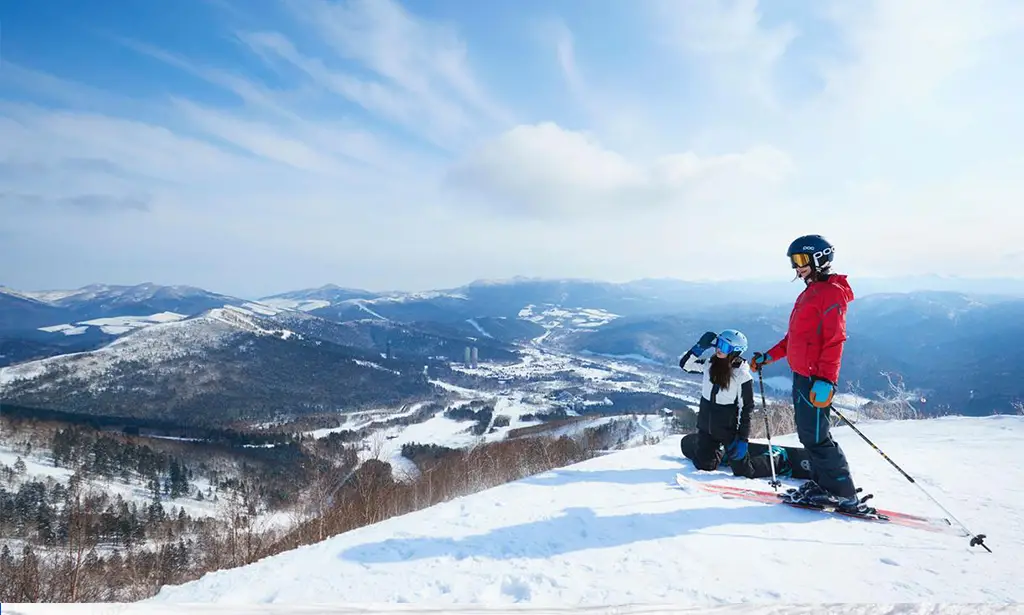
Ski and snowboard while enjoying the beautiful scenery
- Typical Weather: Dry, cold & sunny
- Average winter temperatures: 35°F (2°C) – 55°F (13°C) in Tokyo
- Pros of visiting Japan in the Winter:
- Least crowded season (and cheapest time)
- Great snow for skiing and snowboarding. The best time and places to ski in Japan are Sapporo (December – March), Nagano (January – February). For more details, read Hokkaido Ski Resort: Insider’s Guide to Hokkaido skiing
- Great time for onsens (natural hot spring), seeing “snow monkeys” at Jigokudani Monkey Park, scenic landscapes & villages dusted in snow like Shirakawa-go.
- Join Sapporo Snow Festival (held for one week in February)
- Cons of visiting Japan in the Winter:
- Cold weather, averaging around 43°F (6°C)
- Some outdoor activities, like hiking and biking, maybe more difficult
2. How long are you going to stay?
It’s tricky to precisely say how long you should spend in Japan. Again, it depends on what you’re interested in, and how much ground you want to cover.
- Short Trip: 3–5 days. It’s better to stick to one city and not to travel from one to another because you wouldn’t want to waste your precious time on transportation. So the most recommended destinations for short trippers are Tokyo, Kyoto or Osaka.
- Mid Trip: 7–10 days. In this case, you wouldn’t be able to see all around Japan, but it is possible to pick the best highlights of the country. The most ideal way to plan a trip to Tokyo and 1–3 cities in Kanto or 3 top cities of western Japan which are Kyoto-Osaka-Hiroshima.
- Long trip: 14 days. The basic itinerary for 2 weeks in Japan for first-timer would be these 5 cities Tokyo-Kyoto-Nara-Osaka-Hiroshima. Other recommended itinerary for 2 weeks would be adding far northern or southern islands: Tokyo-Kyoto and Hokkaido or Okinawa.
- Extended long trip: If you’re lucky enough to have three or more weeks in Japan, then you’re going to want to ride the bullet train across the country. Again, we recommend starting in Tokyo and soaking up the city life before you zoom across Honshu to Kyoto and Osaka. From here, you could head north to the island of Hokkaido and bathe in natural hot springs amongst cedar trees, fly south to the tranquil beaches of Okinawa, or tackle the Japanese Alps with ski poles in hands.
You may watch vlogs from previous tourists for inspiration, like this one below:
3. Top attraction and activities
Actually, we have suggested where you should visit and what to do in the two previous sections regarding the season and the length of your stay in Japan. Here is a wrap-up!
Traditional Things
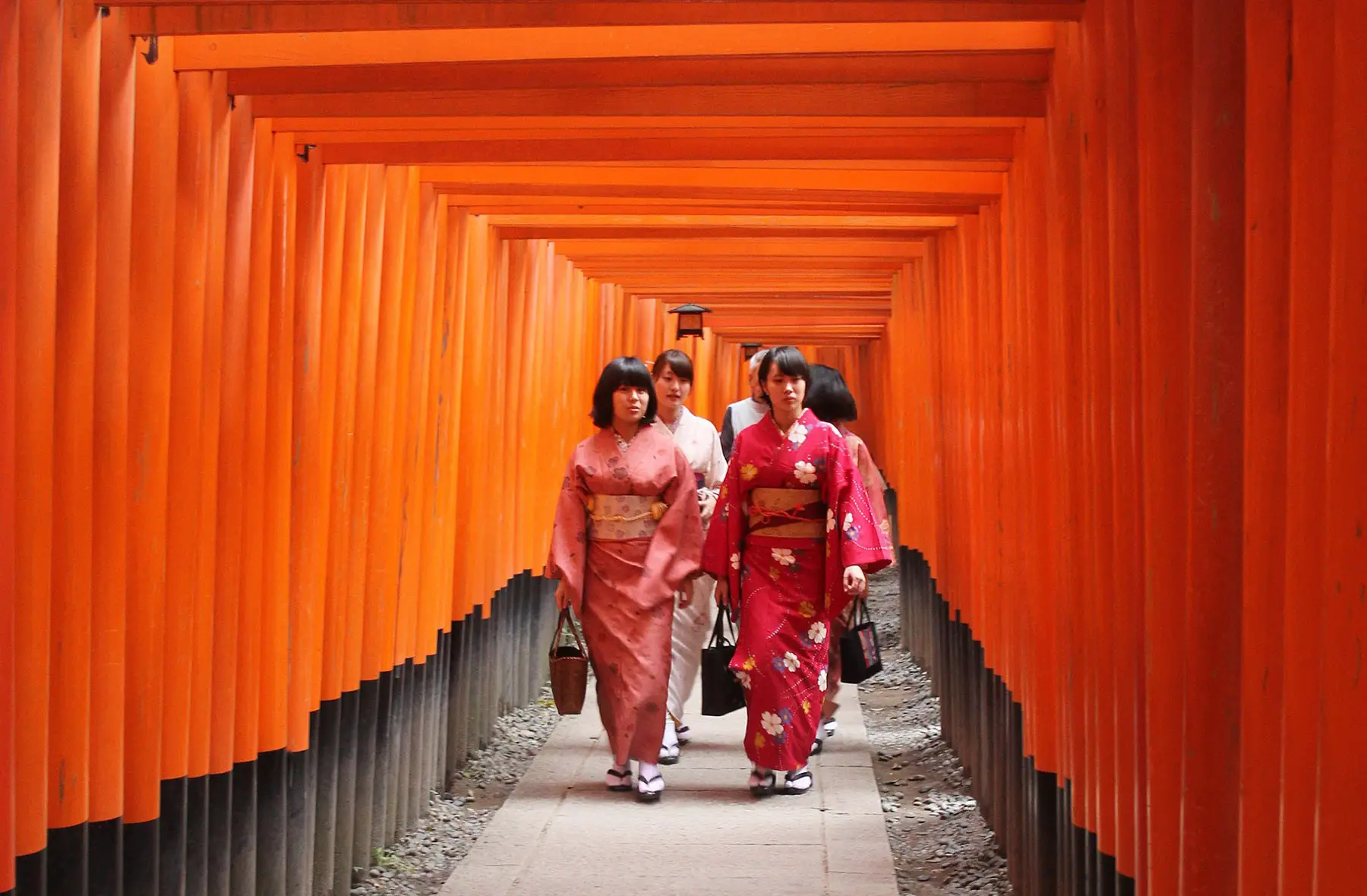
Thousands of Tori Gates at Kyoto Fushimi Inari Shrine
- Definitely don’t miss traditional Japan. I mean beautiful temples, shrines, and castles. They are Japan’s legacy. Some of these famous tourist destinations are Meji Shrine, Asakusa Temple and Imperial Palace in Tokyo, Golden Pavilion in Kyoto, The Island Shrine of Itsukushima, Osaka Castle, …
- See a Professional Sumo Match
- Do a Kimono Fitting
- Relax at an Onsen (hot springs bath). There are plenty of them in Tokyo (you can see some of the best ones here), but Ooedo Onsen Monogatari is a popular one because it’s an onsen theme park where you can soak in one of their baths, get your fortune told and/or have a foot massage.
- Furthermore, you will want to discover Japan during at least one of its 300,000 cultural festivals on this list. Any time of a year, you will find a chance to join one. But if there is a particular festival you die for, you should arrange your travel time and places accordingly. Or else, you feel regretful forever.
Natural Wonders
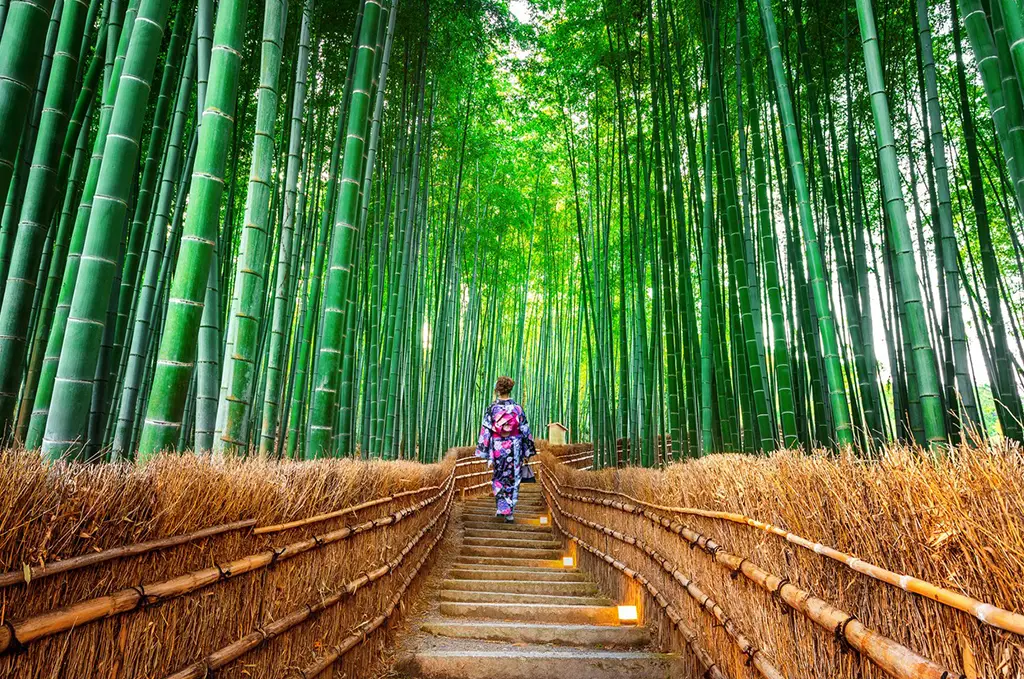
Arashiyama Bamboo Grove in Kyoto
To get a little close to nature, you can visit Yoyogi Park in Tokyo, Nara Deer Park or any landscaped garden like Korakuen in Okayama with ponds, bridges, and trees. More famous natural features would be beautiful tall Arashiyama Bamboo Grove in Kyoto or Nachi Waterfall. Last but not least, the symbol Mount Fuji (near Tokyo) is the highest mountain in Japan and a popular attraction for sightseers and climbers.
Modern activities

Crazy awesome things to do in Japan are robot restaurants, themed cafes, karaoke, …
- Karaoke in Tokyo for nightlife! One of the more well-known is Karaoke Kan, which was the location for Bill Murray’s singing session in the movie Lost in Translation.
- Unleash Your Inner Anime Fan! There are so many shops that sell anime products, like Mandarake in Shibuya or Akihabara as well as themed cafes.
- See a Show at the Robot Restaurant. There are dramatic fights between bikini-clad girls riding atop robots, the sound of the cast playing the charismatic drums and visitors are given a glow-stick to cheer during all the action.
- Experience digital art museums like TeamLab Borderless
- Explore the Ghibli Museum or Tokyo Disneyland
- Other things not to miss? The kooky and creative fashion in Harajuku in Tokyo; the all-women Takarazuka Revue near Osaka; and playing a game of pachinko (kind of like a pinball machine and incredibly noisy!) anywhere in the country.
Notes:
- Use hyperdia and google maps to plan journeys
- Flexibility, don’t rush around seeing everything
- Check if construction work will impact your attraction
- Buy tickets in advance for popular activities
4. Flight and accommodation
When it comes to flight, you and I know what all tourists think. How to get cheap tickets? Long story short, some websites and apps doing all the price comparison tasks for you are Skyscanner, Kayak and Google Flights. You can register the flight(s) you are looking for, and get email notifications when prices go up or down. Lastly, stay alert for discounts, seasonal sales!
When it comes to booking your hotel room in Japan, the first thing you should consider is advance booking (especially during spring) and cancellation policy. It is always better if you book your room in a hotel located nearby the train station so that you could easily get there on foot. It saves money! Booking.com is my favorite site for finding hotels and guesthouses, and I also use Airbnb to find apartments in the big cities (which are often cheaper than hotels).

Only in Japan can you stay in Capsule hotels, Ryokans or Minshuku
If you really want to immerse yourself in the local culture, forget about the western style hotels. Instead, consider accommodation types that you can only find in Japan:
- Capsule hotels: tiny rooms, just large enough to fit a bed, sometimes a small TV as well (around $30/night).
- Ryokans: Traditional Japanese inns, often located near onsens. Guests at ryokans wear robes and slippers, sleep on futons, and enjoy traditional meals with other guests. ($150–$250+/night).
- Minshuku: offering the same perks as Ryokans but less luxury ($50–$80/night).
II. Essential Preparation
1. Visa
No visa requirements for people from these 68 countries to visit Japan for up to 90 days. Easy! Of course, make sure you have a valid passport during the period of your stay and have a return flight out as they may grill you upon arrival. On the other hand, if you are a foreign tourist with a passport from Russia, China, India and a few others on this list, you will also have to get a VISA from your local Japan embassy. Planning a trip to japan would be useless if you get denied in this case.
2. Travel Insurance
Trust me, never forget travel insurance when planning a trip to Japan since healthcare is expensive here. Besides medical expenses travel insurance can cover flight cancellation, lost luggage, and other unexpected situations that may happen.
Regarding best insurance policies, we use and recommend True Traveller (UK/EU residents) and World Nomads (if you’re from US/Australia/worldwide).
3. Driver’s License
A small precision for foreigners who wish to drive in Japan, you have two choices. You can get an International Driving Permit before the trip or transfer your existing driving license at a Japan Automobile Federation (JAF) center later. For detailed information, please read here.
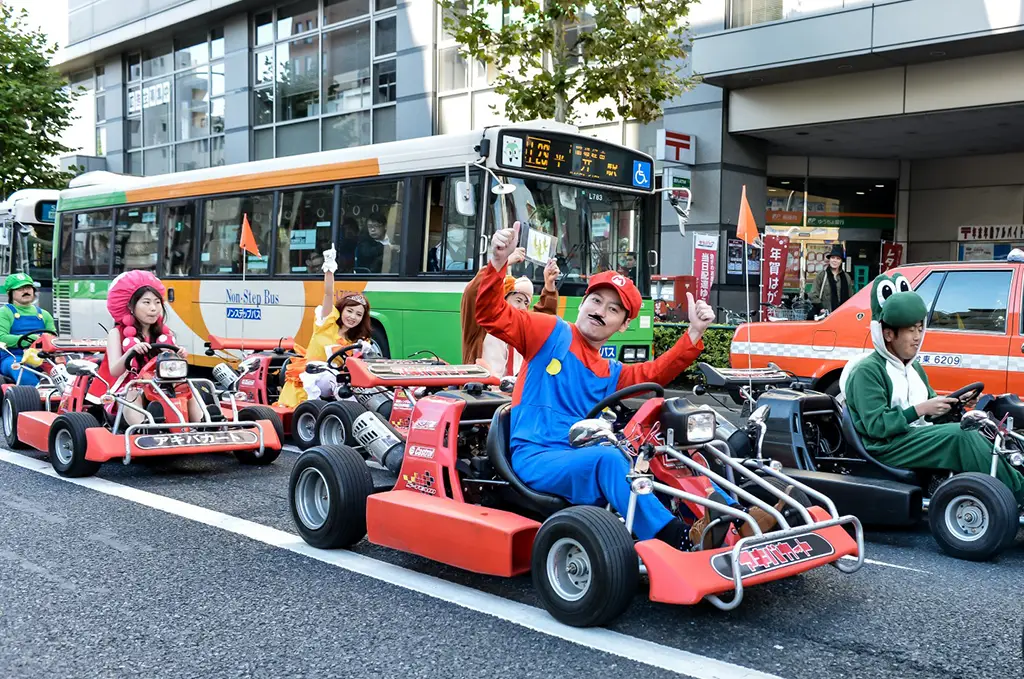
You’ll need a driver’s license for go-karting on the real Tokyo roads dressed as your favorite character. Insanity but one of the most fun things in Japan.
4. Learn Japanese
You might run into people who speak English, especially in cities like Tokyo, but don’t count on it. Try to speak as much Japanese as possible. Worried you won’t have time to learn Japanese before you go? You can get by on your trip with the basic Japanese travel phrases here, along with hand motions and a lot of bowing. And you can always rely on apps like Google Translate or Microsoft Translator.
5. Japan Rail Pass, must-have?
If you have read other travel guides before this one, you must hear about the special JR pass. This pass is valid for unlimited travel on Japan Railways (JR) transportation including trains, local JR bus services, ferry services, and airport transfers. Most bloggers suggest buying it like it is absolutely a huge saving when traveling Japan. But it is such a careless conclusion. The truth is, darling, it depends.
Look at the itinerary you and I made, answer these questions:
- How long will you stay? Less than 7 days, then there is no need for JR pass.
- How much traveling will you do? If you only stay in Tokyo or visit nearby cities, JR pass is a waste.
- Which one is your priority, time or price? The JR pass does not cover high-way busses and some high-speed types of shinkansen (bullet trains) such as Nozomi (Tokaido-Sanyo), Mizuho (Sanyo-Kyushu)… Are you willing to spend half a day for travel time or more money for a quick convenient alternative?
In short, JR pass is only cost effective for several long-distance travel by train in one, two or three weeks. You should calculate and compare the cost of purchasing individual tickets and JR pass in HyperDia, Google Maps or Japanguide.
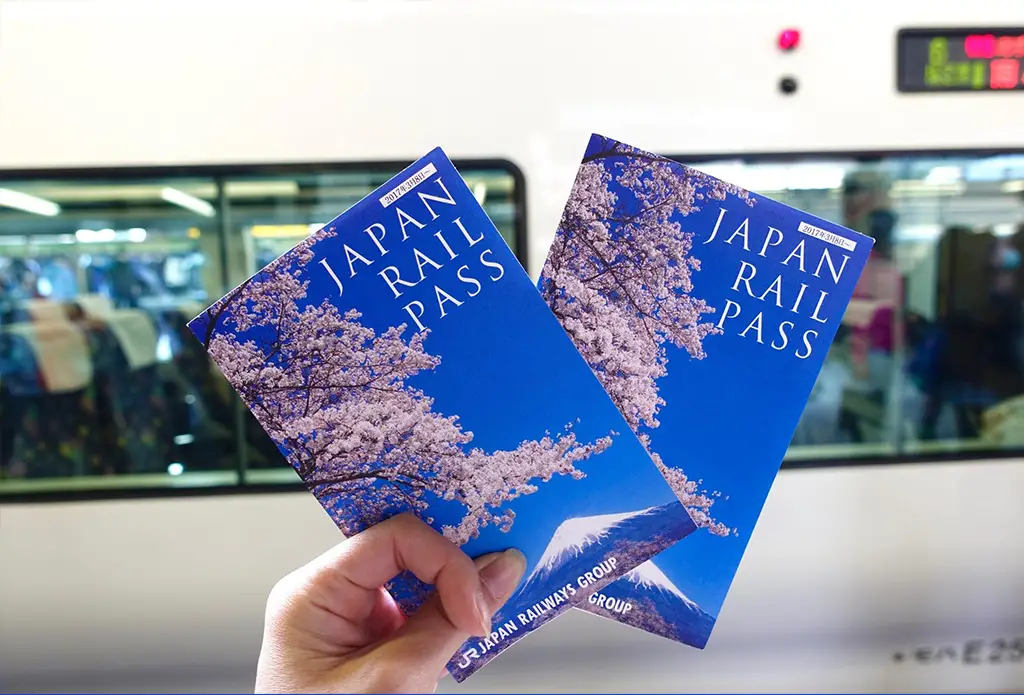
The JR Pass is a special pass valid for unlimited travel on Japan Railways transportation
Where to buy JR pass? Until recently you could only buy JR Passes outside the country (because the pass was special for travelers). Although this rule has recently changed and Japan is now selling passes inside the country, we’d still recommend ordering online from JRailPass.com.
6. Pocket wifi/ 4G SIM
One of the first things many visitors wish to figure out upon arriving in Japan is how to get connected to the internet. To your surprise, there is not always free wifi at hotels, restaurants, cafes or public places in Japan, especially when you are outside of big cities like Tokyo.
Two common solutions are either with a domestic 4G data sim card for your smartphone or with a portable WiFi router that can be shared for those traveling in a group. One of the most convenient places to find these are at the airport. It’s possible with some of these companies to book over the internet in advance, and then simply pick up your router or sim card in the terminal upon arrival.
7. Bring cash and a way to get more

Make sure you always have cash on hand as many places don’t accept credit cards.
Japan is a cash-based society. A lot of places here won’t accept credit cards such as local bars, mom-and-pop restaurants, tickets machine, street food vendors, small retailers, and some taxis. Therefore, you will need to carry some Japanese yen (JPY) to make purchases during your trip. It’s a good idea to exchange in advance since the foreign exchange centers located in the airport won’t give you the best deal.
So here’s another bad news: not all ATMs in Japan accept foreign cards. Here’s the good news: Japan has more than 20,000 7-Eleven stores. ATMs within 7-Eleven and other international convenience stores such as Family Mart or Lawson normally do accept foreign cards. ATMs at post offices are also good places to withdraw cash.
8. What to pack
Packing is, inevitably, the worst part about traveling. Nobody likes to do it, but we could make it quick and painless for you. Similar to traveling anywhere, you need to pack:
- Personal hygiene: Toothbrush, Sunscreen, Deodorant, Dental Care, …
- Documentation: Visa / Passport, Driver’s License, Reservation, …
- Medication: Allergy Medication, Hand Sanitizer, Pain Medication, Digestive Medication,… (If you have any doubts, refer to the following Important Note Regarding Bring Your Own Medicines Into Japan from Japanese Ministry Of Health)
- Electronic Devices: Smartphone, Camera, Laptop, Power Adapters, External charging Battery, …
- Cash, Credit Cards, …
Now, I need you to remember when you visit Japan. Because this decides which types of clothes you should bring.
- Early spring and late autumn could be chilly and rainy but there is nothing to be worried about. Bring a light jacket and shoes that are waterproofed.
- Summer in Japan is hot and humid, except for the Hokkaido region and some cities located far north in the Tohoku region. During the rainy season, it rains a lot here! I think you know the ways of how to survive the summer there, don’t you? If not then read this comprehensive packing list guide, especially crafted for you.
- If you are going to visit Japan in winter, especially in northern Japan: Tohoku and Hokkaido regions, remember it is terribly cold in winter there! Long-sleeve T-shirts to layer under sweaters and coats will provide a base of warmth; if you don’t have anything heavy enough, consider purchasing special thermals before or after you come to Japan. A winter coat with a hood and warm lining is essential. Scarves, hats, and gloves will also help you feel more comfortable as the wind can be piercing. Long pants layered on top of long underwear will keep your legs warm.
III. When You Are In Japan
1. Cultural do and don’t
Planning a trip to Japan, mind the unique cultural difference here.
Do
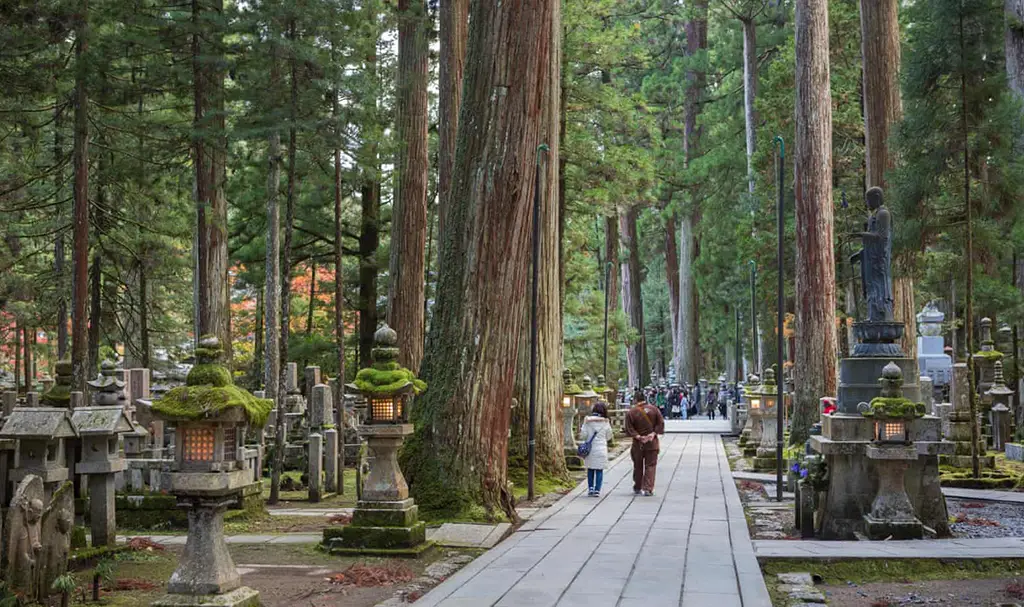
On public transportation, at shrines and temples, at restaurants and cafes, and especially in hot springs – tone it down a little.
- Take off your shoes before entering houses, temples, and in many cases even restaurants. Whenever you enter a space, make sure to look out for signs that ask you to take off your shoes.
- Tone it down. The Japanese have a time and place for being loud, and that’s in a karaoke box or at a pub. Anywhere else, keep the volume down, mostly not to annoy each other.
- Slurp your noodles. In fact, the louder it is, it’s considered a compliment to the chef.
- Keep to the left whether driving, walking or riding an escalator.
Don’t
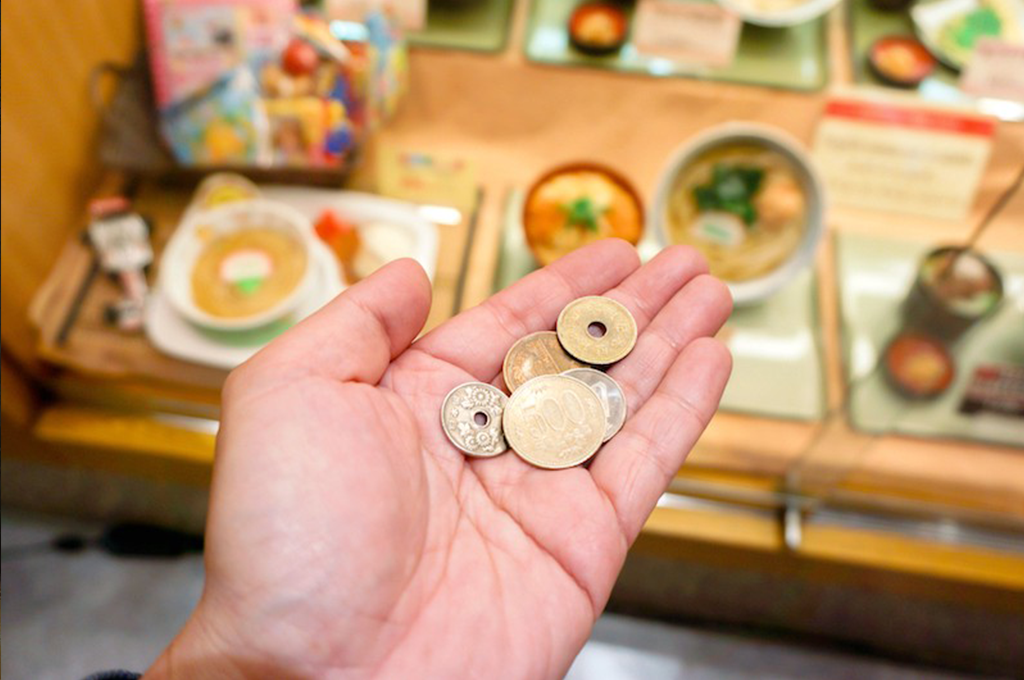
In Japan, tipping, in general, isn’t a thing.
- Don’t walk around eating or smoking.
- Don’t misuse your chopstick, for example, passing someone food from your chopsticks to theirs and sticking chopsticks into a bowl of rice.
- Don’t harass geisha or maiko for selfies. These graceful ladies are not tourist attractions or celebrities.
- Don’t leave tip or count your change. The price you see is the price you pay.
2. What to buy in Japan

From traditional souvenirs to Japanese cosmetics, Japan offers a huge shopping option for travelers.
When traveling to Japan, you’ll have no shortage of shopping opportunities. Here is a basic list:
- Japanese cosmetics: Makeup, skincare, and hair products from Japan are the top choice for female travelers due to their great quality! From high-end brands like Shiseido, KOSE, and SK-Ⅱ to inexpensive brands like CANMAKE and KATE, a wide range of products can be found easily at Japanese drugstores in every town.
- Inexpensive Clothes: Some of Tokyo’s districts such as Shibuya, Harajuku, and Ginza offer the world’s finest and the most trendy fashion pieces. Along with luxurious brands, there are also many shops where you can complete your look with a very small budget such as UNIQLO, GU, and WEGO.
- Traditional souvenirs: Small gifts like handcrafted chopsticks, teacups, Sensu (folding hand fans) or Furoshiki (multi-use cloth) are very handy to take home! At many Japanese temples and shrines, you can find lucky charms such as Omamori and Ema sold for good luck. Each one has usually different meanings, which are extremely special and admiring. If you’re looking for some games and toys to bring home, take a gander at Kendama (Japanese for “sword and ball”), Koi streamers and festival goods.
- Anime, manga, and beyond: Even if you are not a fan of anime or manga, you can still look for something unique (and maybe weird) simply to make your friends/family laugh. Akihabara is the best area to shop for these. Besides, to hunt cool Japanese stationery, households, interior goods, recommended shops are LOFT, Tokyu Hands, MUJI and DAISO.
3. What to eat in Japan
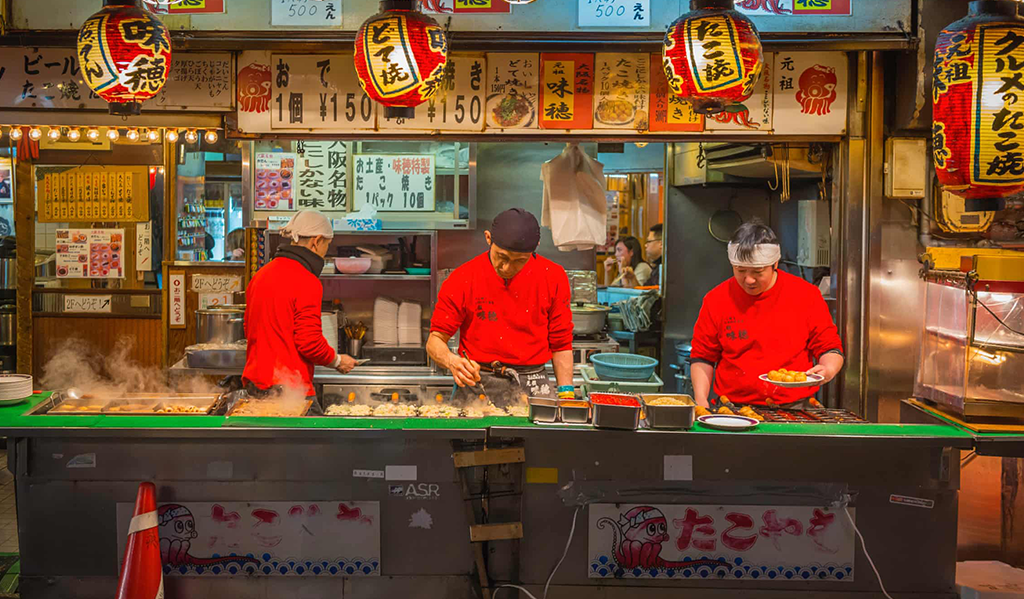
No matter your tastes, you’ll love eating your way through Japan
- Sushi and sashimi, of course! From the high-class restaurant in Ginza to Kaitenzushi, or conveyor belt sushi restaurant (100 yen a plate), you can enjoy sushi anywhere. Don’t miss our useful review Best Sushi In Tokyo.
- Ramen: Ramen is a staple in the Japanese diet and a must when visiting. Look for locals patrons and a milky broth for a good ramen experience.
- Bento: What Is A Bento Box? This small and convenient Japanese style lunch box is a significant symbol of Japanese cuisine.
- Matcha and Sweets: Japanese are known for their sweet tooth. They love Matcha (green tea) taste too. So they put it in Kit Kat Bars, Mochi, Ice cream and other desserts.
- Japanese street foods: In festival or everyday Nakasu district, it’s easy to stumble upon rows of street vendors selling sweet and savory ready-to-eat dishes. They are Takoyaki, Taiyaki, Dango, Japanese crepe, … and so on. Read the whole list here.
4. Get off the beaten path
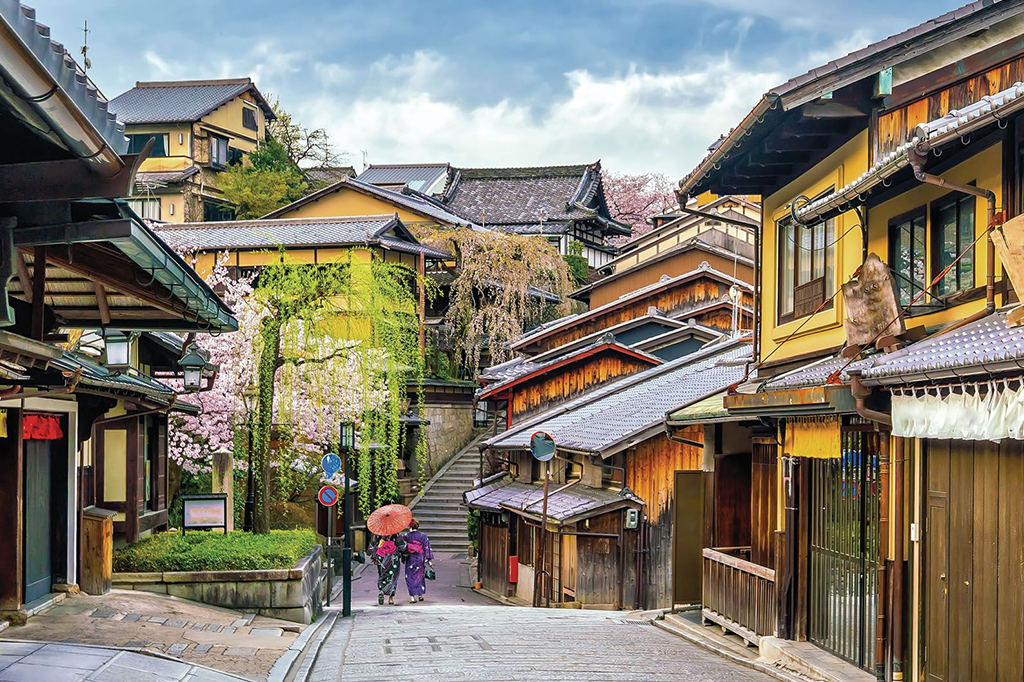
Go beyond Tokyo or other crowded cities, Japan has more to offer.
What I mean about exploring off the beaten path in Japan extends to within major cities and also exploring cities or countryside less frequented and undiscovered by tourists. Many tourists seem to stick to the Tokyo – Kyoto- Osaka route, but there is so much more in Japan, believe it or not!
The best way is to see Japan through the eyes of a local. With their help of a friend or enthusiastic tour guide, you’ll see a unique side of Japan that most tourists miss. Not only they share their insider secrets with you, but it’s always a whole lot of unexpected fun.
Conclusions
Dear, I try my very best to include all the bullet points you need for planning a trip to Japan here. Not many people can go this far, so congratulations! You are a real travel master.
But the task is not finished yet. As you can tell, I added a lot of links and references which are much more detailed for each subject. My advice is to read travel guides as much as you like because it is never enough learning about Japan and how to plan a dream trip to this fascinating country.
I hope this post is helpful to you. Still have questions about travel to Japan? Please free to leave a comment before you leave this page. Thank you very much. I wish you have a great adventure in Japan.

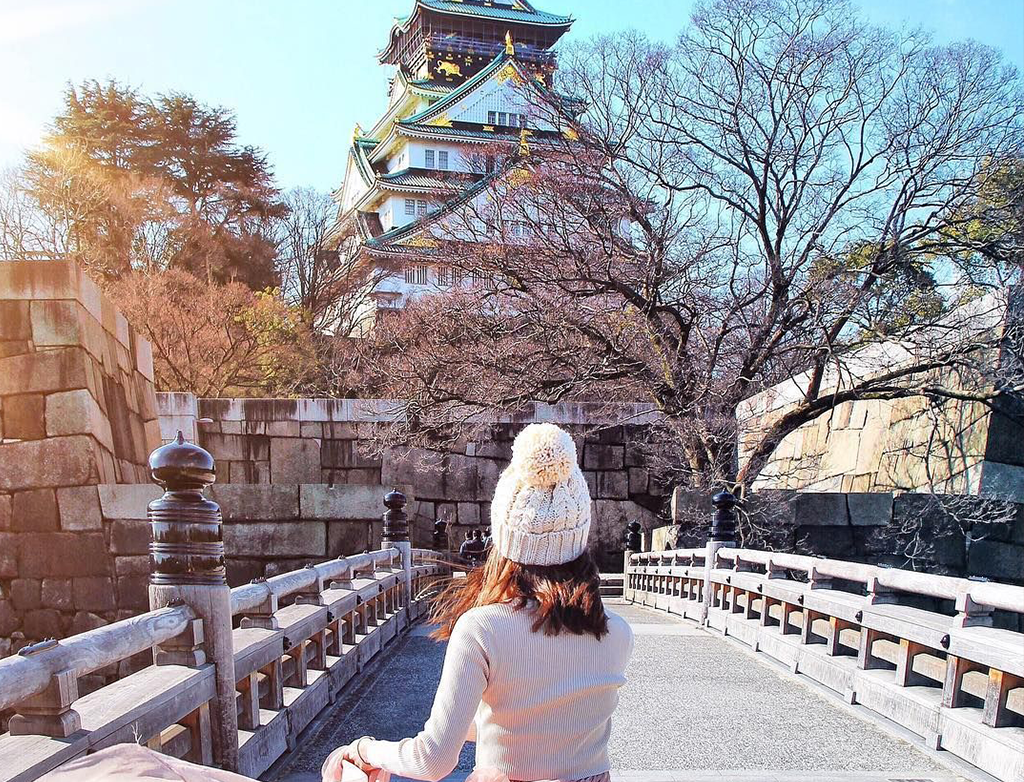
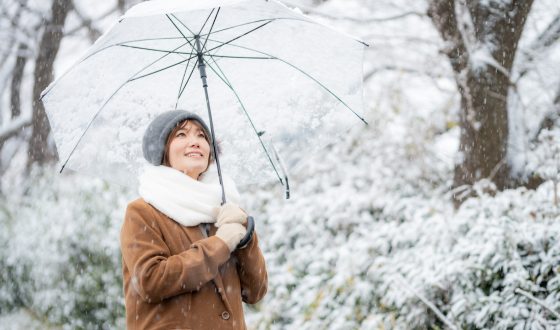

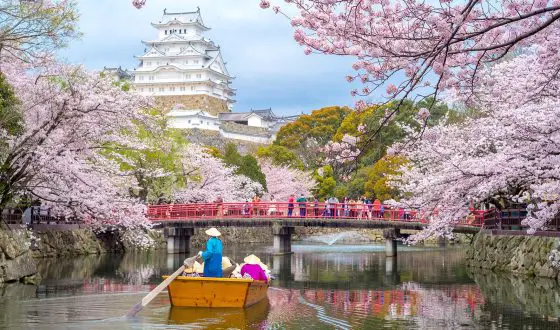





Hi, Hayami.
Thank you so much for such complete tips! This post is super useful!
I’m planning a trip to Japan in 2021 and was in doubt about many points (like where to buy the JrailPass, accommodation and the travel insurance) and now I’m more sure about it, thanks to your advice.
Let’s hope it’s safe to travel again soon!
XoXo